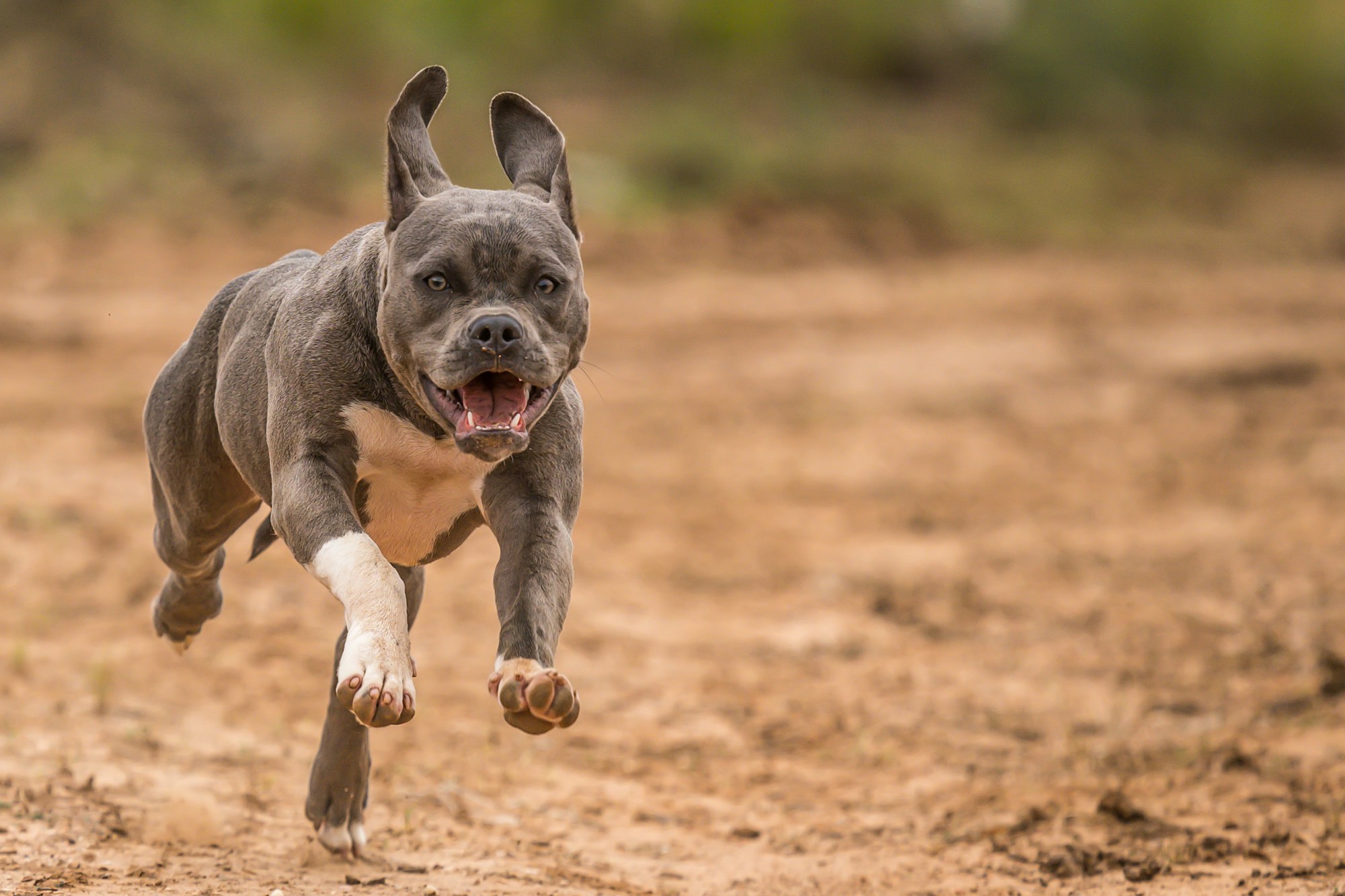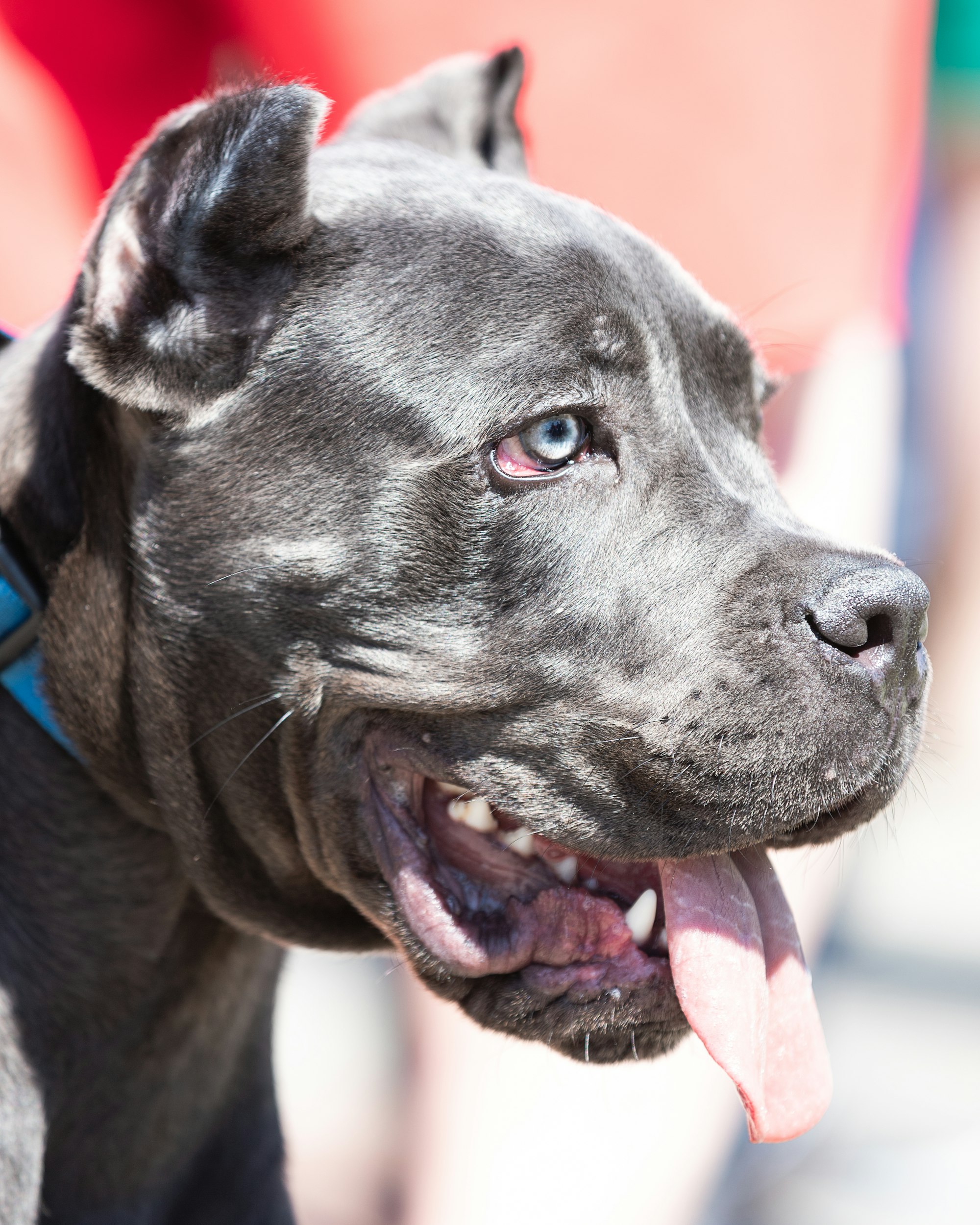Pitbulls have long captivated the attention of dog enthusiasts and skeptics alike. With their muscular build and strong jaw, they possess an undeniable power that has sparked curiosity about their bite force. In this article, we delve into the world of pitbull bite force, unraveling its mysteries, and exploring the truth behind its strength.
Anatomy of a Pitbull
Pitbulls, known for their powerful and muscular build, have a distinctive anatomy that contributes to their impressive physical abilities. Understanding the anatomy of a pitbull is essential in comprehending their bite force and overall capabilities. In this section, we will explore the key features of a pitbull's anatomy.

Muscular Build
One of the most prominent characteristics of a pitbull is their muscular build. Their bodies are well-defined and exhibit exceptional strength. Pitbulls have a strong chest and well-developed forelimbs, which provide the foundation for their powerful movements and agility.
Head and Jaw Structure
The head of a pitbull is broad and proportionate to their body size. It features a strong and muscular jaw that is designed for gripping and holding onto objects with great force. The jaws of a pitbull are equipped with sharp teeth, including powerful canines, incisors, premolars, and molars, enabling them to effectively bite and tear through objects.
Neck and Shoulders
Pitbulls have a robust and muscular neck that connects their head to the rest of their body. This sturdy neck enhances their stability and control, allowing them to exert force while maintaining balance. The shoulders of a pitbull are well-developed and provide the necessary power for their movements, including running, jumping, and tackling tasks that require physical strength.
Chest and Body Structure
The chest of a pitbull is deep and broad, providing ample room for their heart and lungs. This allows for efficient oxygen intake during physical activities, enabling them to sustain endurance and perform athletically. The body of a pitbull is compact and muscular, with a well-proportioned physique that reflects their strength and agility.
Limbs and Paws
Pitbulls have sturdy and muscular limbs that contribute to their powerful movements. Their forelimbs are particularly strong and play a crucial role in activities that require force, such as digging or gripping objects. The paws of a pitbull are compact and feature strong pads and claws, which aid in their traction and grip on various surfaces.
Tail
The tail of a pitbull is medium in length and tapers towards the end. It serves as an extension of their body, aiding in their balance and coordination during movements. The tail also plays a role in expressing emotions, with different positions and movements conveying different moods and intentions.
Understanding the anatomy of a pitbull provides valuable insights into their physical capabilities and behaviors. It highlights their strength, agility, and adaptability in various situations. The combination of their muscular build, powerful jaw structure, and overall physique makes pitbulls a remarkable breed with exceptional potential.
Now that we have explored the anatomy of a pitbull, let's delve into the concept of bite force and uncover the fascinating details behind this extraordinary canine attribute.
Understanding Bite Force
Bite force is a critical aspect of a pitbull's physical prowess. It refers to the amount of pressure exerted by their jaws when biting down. Understanding bite force is essential in comprehending a pitbull's capabilities and their role in the animal kingdom.
What is Bite Force?
Bite force refers to the amount of pressure generated by an animal's jaw muscles. It plays a significant role in hunting, defense, and survival. For pitbulls, their bite force is a combination of their jaw structure, muscle strength, and overall physical attributes.

Measuring Bite Force
Measuring bite force in pitbulls is a complex task that requires specialized equipment. Researchers utilize force transducers to measure the maximum pressure exerted by a pitbull's bite. These measurements provide insights into their relative bite force strength compared to other species.
Factors Affecting Bite Force
Several factors contribute to a pitbull's bite force potential. The most influential factors include their jaw structure, muscle mass, size, and overall physical condition. Additionally, an individual pitbull's temperament, motivation, and training can also influence their bite force capabilities.
Understanding the factors affecting bite force helps us appreciate the intricacies behind a pitbull's impressive biting abilities. However, it is crucial to dispel some common misconceptions regarding the strength and danger associated with a pitbull's bite force.
Pitbull Bite Force: Myth vs. Reality
Dispelling Misconceptions
Pitbulls have been the subject of numerous misconceptions regarding their bite force. It is essential to separate fact from fiction to gain a clearer understanding of their capabilities. Contrary to popular belief, pitbulls do not possess an inherently stronger bite force than other breeds.
Comparing Pitbull Bite Force
When comparing the bite force of different happy dog breeds, it is crucial to consider variations within each breed. Pitbulls may exhibit a wide range of bite force, just like any other dog breed. Individual variations and training play a significant role in determining the bite force of a pitbull.
How Powerful is a Pitbull's Bite?
Measuring the Force
Although it is challenging to obtain precise bite force measurements for individual pitbulls, studies indicate that they possess formidable jaw strength. The combination of their muscular build and well-developed jaw muscles contributes to their bite-force potential.
Bite Force in PSI
Bite force is often measured in pounds per square inch (PSI). While it is challenging to establish an exact PSI value for pitbulls, estimations suggest that their bite force ranges from 200 to 300 PSI. However, it is essential to note that these figures can vary significantly among individuals.

Comparative Bite Force of Other Animals
When examining bite force in the animal kingdom, pitbulls demonstrate a remarkable capacity. They exhibit a stronger bite force compared to many other domestic dog breeds. However, they fall behind larger predators such as lions, tigers, and crocodiles.
Evolutionary Significance of Bite Force
The bite force of a pitbull is not merely a display of power; it has deep-rooted evolutionary significance. Over time, pitbulls and their ancestors have developed strong jaws and impressive bite force as an adaptation for survival, hunting, and capturing prey. In this section, we explore the evolutionary importance of bite force in pitbulls and its role in shaping their behavior and physical traits.
Adaptations for Hunting and Survival
Throughout history, pitbulls and similar breeds have been utilized as working and hunting dogs. Their bite force is a direct result of evolutionary adaptations that have enabled them to excel in these roles. The ability to exert significant force with their jaws has proven crucial for their hunting success and overall survival in challenging environments.
Bite Force and Prey Capture
Pitbulls possess an innate instinct for capturing prey. Their strong jaws and bite force allow them to grip and immobilize their targets effectively. This biting capability aids in securing food, defending territory, and protecting themselves and their human companions. The evolution of bite force in pitbulls has played a vital role in their efficiency as hunters and their historical partnership with humans in various tasks.
Jaw Structure and Muscle Development
The structure of a pitbull's jaw is a key factor in their bite force. The skull and mandible of pitbulls are designed to withstand the forces generated during biting and gripping. Their jaw muscles, including the masseter and temporalis muscles, have developed alongside their bite force capabilities, providing the necessary strength and control required for capturing and holding onto prey.
Importance in Competitive Activities
Pitbulls have a long history of participating in competitive activities such as dog fighting, weight pulling, and protection work. These activities, although controversial and often illegal, have further influenced the development and expression of bite force in pitbulls. Their natural bite force capabilities have been selectively enhanced through breeding practices, aiming to create dogs with greater power and tenacity in these arenas.
Breed-Specific Traits
Different breeds of pitbulls may exhibit variations in bite force due to their unique genetic makeup. For example, the American Pit Bull Terrier and the Staffordshire Bull Terrier are known for their strong bite force, while other pitbull breeds may have slightly different biting capabilities. These breed-specific traits have been refined through generations of selective breeding to enhance certain characteristics, including bite force, temperament, and physical abilities.
Understanding the evolutionary significance of bite force in pitbulls shed light on their innate behaviors and instincts. While their bite force has been adapted for hunting and survival, it is essential to emphasize responsible ownership and training to ensure that these natural capabilities are channeled appropriately in modern-day settings.
The Impact of Bite Force on Training and Ownership
Owning a pitbull comes with the responsibility of understanding and managing their bite force. The powerful jaws and bite force of a pitbull require careful training, socialization, and responsible ownership. In this section, we explore the impact of bite force on training and ownership, highlighting the importance of channeling this natural attribute in a safe and controlled manner.
Responsible Ownership and Training
Responsible ownership is crucial for managing a pitbull's bite force effectively. Owners must prioritize obedience training, socialization, and providing a stimulating environment for their pitbull. By establishing clear boundaries, rules, and consistent training, owners can shape their pitbull's behavior and ensure that their bite force is controlled and used appropriately.
Positive Reinforcement and Obedience Training
Positive reinforcement methods are highly effective when training pitbulls. Reward-based training, using treats, praise, and play, encouraging desirable behaviors, and helping redirect their energy and strength. Obedience training teaches pitbulls to respond to commands, fostering control and minimizing the risk associated with their bite force. Check out Fi's diverse pitbull collars option of the highest quality.

Managing Natural Instincts
Understanding a pitbull's natural instincts is vital for managing their bite force. While their powerful jaws and bite forces are innate, proper training can help channel these instincts into acceptable behaviors. Teaching appropriate biting inhibition, bite control, and redirecting their focus through training exercises are critical aspects of managing their bite force.
Socialization and Exposure
Early socialization plays a significant role in a pitbull's development and bite force management. Exposing them to various people, animals, and environments from a young age helps them become well-rounded and confident. Positive experiences during socialization contribute to their ability to control their bite force and interact safely with others.
Supervision and Management
Supervision is crucial when owning a pitbull, especially in situations where their bite force may come into play. Responsible owners should never leave their pitbull unsupervised with children, strangers, or unfamiliar animals. Proper management involves understanding their triggers, setting realistic expectations, and creating a safe environment to prevent potential incidents. Know are pitbulls good with kids?
Breed-Specific Regulations and Education
In some regions, there may be specific regulations or breed restrictions for pitbulls due to their perceived strength and bite force. Owners need to be aware of local laws and regulations and comply with them accordingly. Educating oneself about the breed, their characteristics, and responsible ownership practices helps promote a positive image of pitbulls in society.
Community Engagement and Support
Engaging with the local community and seeking support from experienced professionals, such as trainers and behaviorists, can greatly assist in managing a pitbull's bite force. Participating in training classes, breed-specific events, and seeking guidance from knowledgeable individuals can provide valuable insights and resources for responsible ownership.
Building Trust and a Strong Bond
Developing a strong bond based on trust and respect is essential for managing a pitbull's bite force effectively. Positive interactions, consistent training, and providing a loving and nurturing environment foster a strong relationship between the owner and their pitbull. Trust-building activities and ongoing reinforcement of good behavior contribute to a harmonious partnership.

By understanding the impact of bite force on training and ownership, pitbull owners can ensure a safe and balanced relationship with their beloved pets. Responsible ownership, proper training, and ongoing education are key in managing a pitbull's bite force and fostering a positive and enriching environment for both the owner and the dog.
FAQs (Frequently Asked Questions)
1. What is the average bite force of a Pitbull?
The average bite force of a pitbull ranges from 200 to 300 pounds per square inch (PSI). However, it is significant to note that bite force can vary among individual good family dogs.
2. Can Pitbulls control their bite force?
With proper training and socialization, pitbulls can learn to control their bite force. Responsible ownership and consistent training are key to managing their natural strength.
3. Are Pitbulls more dangerous due to their bite force?
Pitbulls are not inherently more dangerous than other dog breeds solely due to their bite force. Responsible ownership, training, and socialization play a significant role in a dog's behavior and temperament.
4. How does a Pitbull's bite force compare to other dog breeds?
Pitbulls exhibit a stronger bite force compared to many other domestic dog breeds. However, larger predators such as lions and tigers possess significantly stronger bite forces.
5. What should owners do to manage a Pitbull's bite force?
Owners should focus on responsible ownership, proper training, and socialization to manage a pitbull's bite force effectively and ensure a safe and harmonious environment. Implementing positive reinforcement techniques, obedience training, and providing regular exercise and mental stimulation are essential. Consulting with professional trainers or behaviorists can also provide valuable guidance in managing a pitbull's bite force.
Conclusion
Pitbulls possess a formidable bite force that stems from their physical attributes and evolutionary background. However, it is essential to dispel misconceptions and understand that their bite force is not inherently stronger than other breeds. Responsible ownership, proper training, and managing their natural instincts are crucial for fostering a harmonious relationship between pitbulls and their human companions.